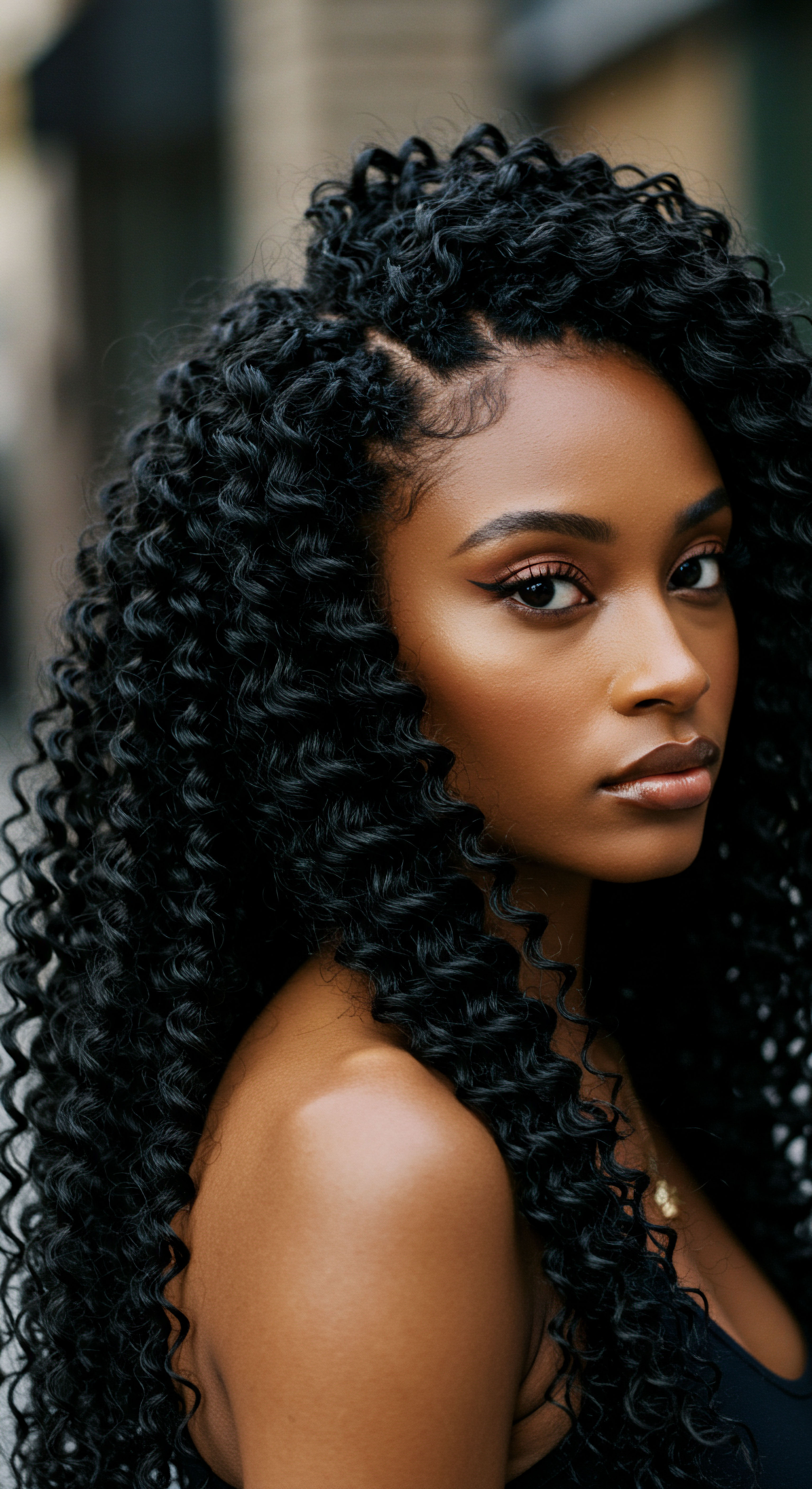
Roots
The journey to understanding how historical methods preserved hairline health for textured hair begins not with a simple question, but with an invitation to consider the very essence of these strands, deeply connected to heritage and identity. For centuries, across continents, textured hair has carried profound cultural weight, serving as a visual language of status, age, and spiritual connection. It is a story etched not just in the curls and coils themselves, but in the practices, tools, and beliefs passed down through generations. This exploration seeks to unearth the wisdom of ancestral care, revealing how ancient hands nurtured hairlines, safeguarding them with a blend of reverence, practicality, and natural elements.
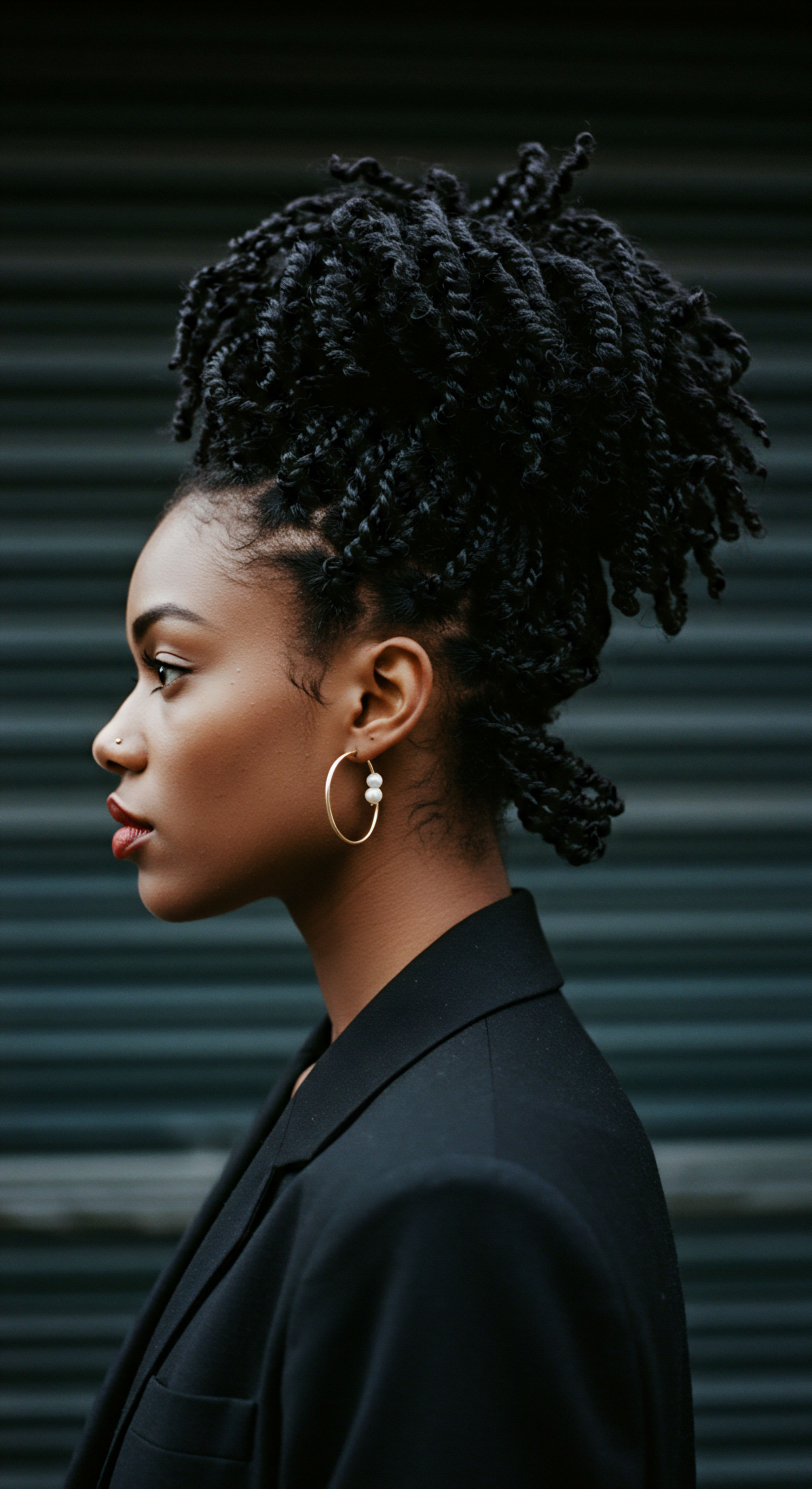
Hair Anatomy and Physiology Specific to Textured Hair
Textured hair, encompassing a spectrum of curl patterns from waves to tight coils, possesses unique structural characteristics that influence its care requirements. Unlike straight hair, the elliptical shape of the hair follicle for textured strands causes the hair shaft to grow in a helical, or spiral, pattern. This natural curvature creates more points along the hair shaft where the cuticle layers are lifted, making it inherently more prone to dryness and breakage. The cuticle, the outermost protective layer of the hair, acts as a shield, but its lifted nature in textured hair means moisture can escape more readily, and external aggressors can penetrate with less resistance.
Understanding the very nature of these strands is the first step in appreciating historical care. The unique twists and turns along the hair shaft mean that natural oils, or sebum, produced by the scalp, do not travel down the strand as easily as they would on straight hair. This inherent tendency towards dryness makes textured hair particularly vulnerable to damage, especially at the delicate hairline where new growth is most exposed and often the most fragile. Historical practices, as we shall see, instinctively addressed this fundamental physiological reality.

Textured Hair Classification Systems
While modern classification systems categorize textured hair into types (e.g. 3A-4C), historical communities did not rely on such formal categorizations. Their understanding was rooted in observation and communal knowledge, recognizing distinct hair characteristics within their populations and tailoring care accordingly. This nuanced appreciation of individual hair traits, even without scientific nomenclature, allowed for highly personalized and effective methods.
Ancient African societies, for example, understood variations in hair texture and developed specialized techniques and preparations for each. The diversity of hair within African communities meant that a “one-size-fits-all” approach was never viable. Instead, specific remedies and styling approaches were developed for different curl patterns, densities, and porosities, even if these terms were not explicitly used. This deep, experiential knowledge informed the communal approach to hair care.
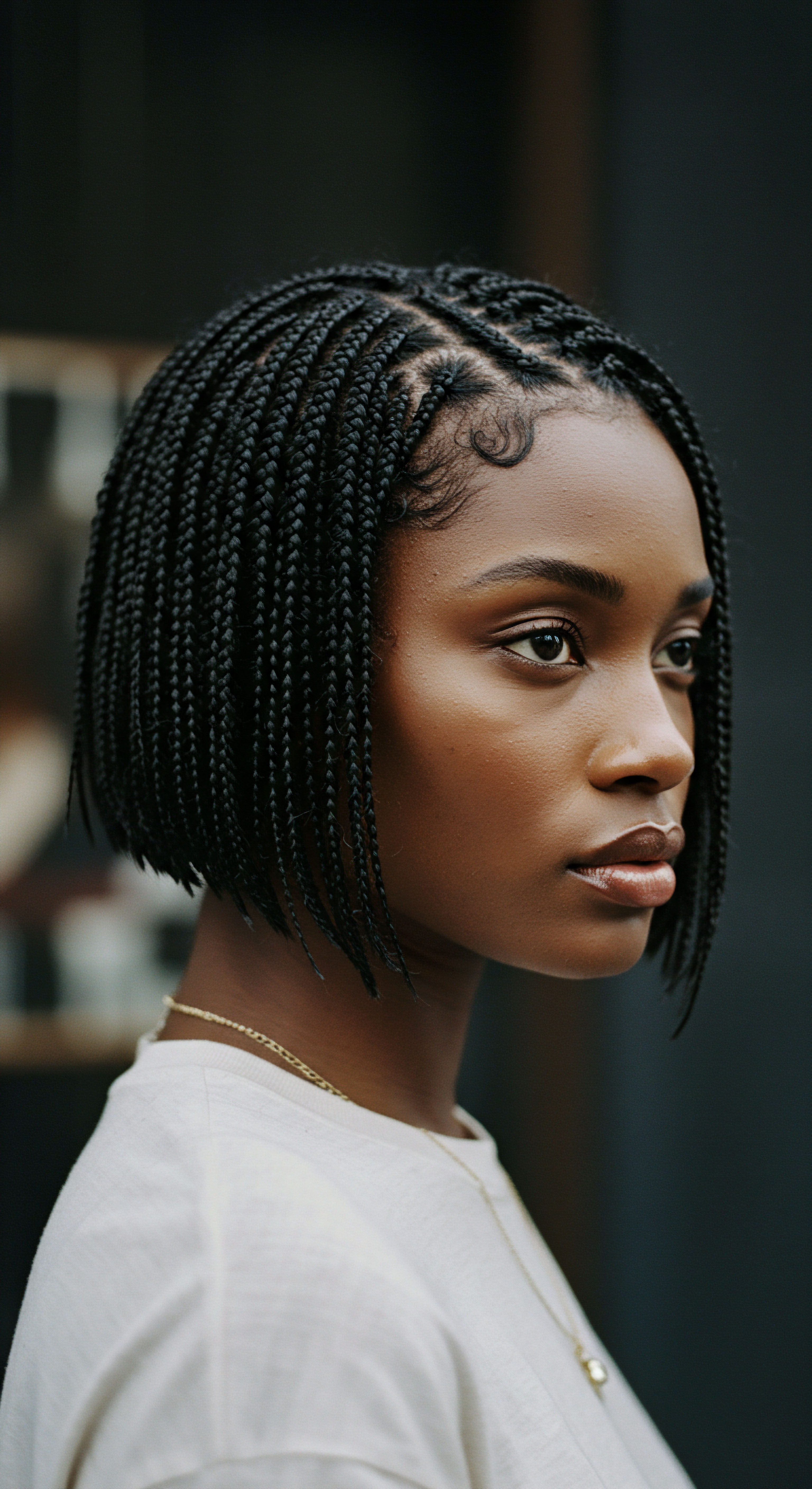
The Essential Lexicon of Textured Hair
To truly appreciate the historical methods, we must also consider the language used to describe hair and its care in different eras. While modern terms like “porosity” or “elasticity” are relatively recent additions to our vocabulary, ancient communities possessed their own rich lexicons. These words, often tied to cultural narratives and spiritual beliefs, conveyed deep understanding of hair’s properties and its relationship to overall well-being.
For many African cultures, hair was considered sacred, a conduit for spiritual energy and a symbol of life itself. Terms related to hair were often imbued with cultural significance, reflecting its role beyond mere aesthetics. This reverence naturally extended to the hairline, seen as the boundary of the self, deserving of meticulous attention and protection. The care practices were not simply cosmetic; they were deeply rooted in cultural values and spiritual connections.

Hair Growth Cycles and Influencing Factors
The hair growth cycle consists of three primary phases ❉ anagen (growth), catagen (transition), and telogen (resting). Understanding these cycles, even without formal scientific terms, was an implicit part of historical hair care. Traditional practices often aimed to prolong the anagen phase and minimize breakage, thereby promoting length retention.
Factors influencing hair growth, such as nutrition, hydration, and mechanical stress, were intuitively managed through diet, topical applications, and styling choices. Communities recognized that internal health manifested externally, including in the vitality of one’s hair. This holistic perspective meant that hairline health was not isolated but viewed as a reflection of overall well-being and the careful application of traditional wisdom.
Ancestral hair care, rooted in profound observation and cultural understanding, instinctively addressed the unique structural needs of textured strands, safeguarding delicate hairlines.
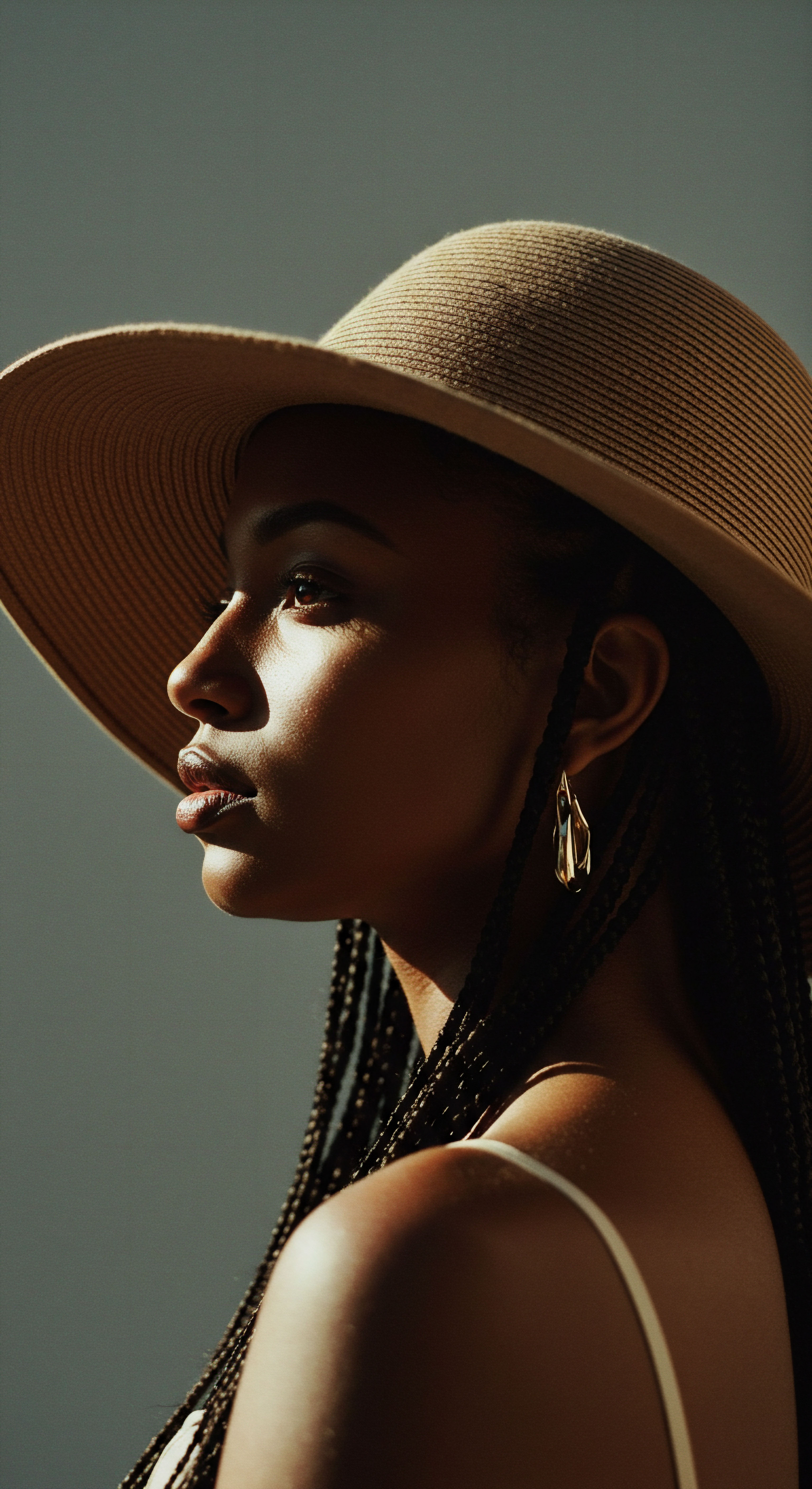
Ritual
Stepping from the foundational understanding of textured hair, we now turn to the practical wisdom that shaped historical hairline health. These were not mere routines, but deliberate, often communal, acts—rituals that acknowledged the delicate nature of the hairline and sought to preserve it through mindful application and styling. The hands that braided, oiled, and adorned understood the whispers of the scalp, responding with practices designed to shield and strengthen. This section explores these applications, the tools employed, and the enduring legacy of these protective gestures.
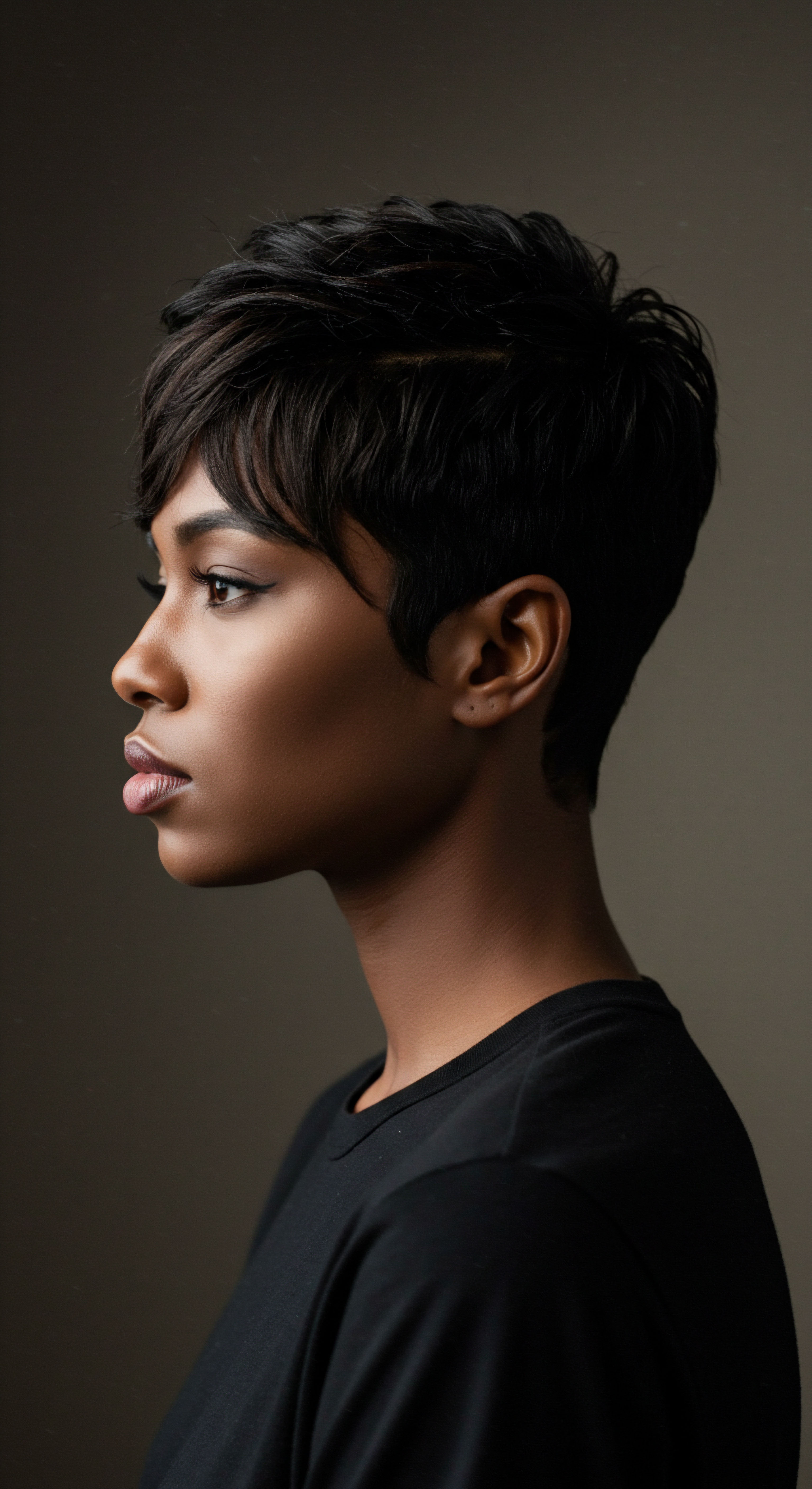
Protective Styling Encyclopedia
Across various historical societies, protective styling emerged as a cornerstone of hairline preservation for textured hair. These styles minimized manipulation, reduced exposure to environmental stressors, and helped retain moisture, all of which are vital for fragile hair at the scalp’s edge.
Cornrows, known in some regions as “canerows,” are perhaps one of the most enduring and historically significant protective styles. Archaeological evidence suggests cornrows were worn as early as 3000 BCE in Africa. These tightly braided rows, lying flat against the scalp, served not only as a means of communication, conveying status, age, or tribal affiliation, but also as a practical solution for hair preservation.
During periods of immense hardship, such as the transatlantic slave trade, cornrows were even used to hide rice seeds for survival and to create maps for escape routes, demonstrating their profound functional utility beyond aesthetics. The close-to-the-scalp nature of cornrows inherently shielded the hairline from external forces, minimizing friction and tension on the delicate perimeter.
Other protective styles included Braids (such as box braids, with evidence traced back to 3500 BCE in South Africa), Twists, and Locs. These styles allowed hair to rest, reducing daily pulling and combing that could stress the hairline. The longevity of these styles meant less frequent manipulation, a key factor in preventing breakage and preserving the fragile new growth around the face.
The Himba tribe in Namibia, for instance, used a mixture of clay and cow fat to create dreadlocked styles, which protected their hair from the harsh sun. This highlights how environmental adaptation informed protective styling.

Natural Styling and Definition Techniques
Beyond long-term protective styles, historical communities also developed methods for natural styling that honored the hair’s inherent texture while still prioritizing its health, especially around the hairline.
The application of natural oils and butters was a consistent practice. Shea butter, widely used in many African tribes, served as a powerful moisturizer and protectant against harsh environmental conditions. Marula oil, from Mozambique and South Africa, also offered moisturizing properties and antioxidants.
These emollients created a barrier, helping to seal in moisture and reduce the friction that could damage delicate hairline strands. Regular oiling and massaging of the scalp, a practice common in Indian hair care, promoted blood circulation and reduced dryness, contributing to overall hair and hairline vitality.
Another method was the use of African Threading, where hair sections are wrapped tightly with thread. This technique, found among the Yoruba people of Southwestern Nigeria since the 15th century, is known for its length retention benefits and ability to stretch hair without heat, thereby safeguarding the hairline from thermal stress.

Wigs and Hair Extensions Mastery
The use of wigs and hair extensions also holds a significant place in the history of hairline preservation. Ancient Egyptians, for example, frequently wore elaborate wigs made from human hair, wool, or plant fibers. These wigs were not solely for aesthetic purposes or to signify social status; they also served a practical function, protecting the scalp and natural hair, including the hairline, from the intense sun and helping to maintain hygiene by reducing the incidence of head lice. By covering the natural hair, these ancient forms of extensions effectively reduced environmental exposure and daily manipulation, offering a form of protective styling.
Archaeological findings have revealed remnants of 3000-year-old weave extensions and multi-colored hair extensions in Egypt, indicating a long history of supplementing natural hair. This practice would have allowed individuals to give their natural hair, particularly the hairline, a rest from styling, thereby promoting its preservation.

Heat Styling and Thermal Reconditioning
While modern heat styling often poses risks to textured hair, historical thermal methods were often more gentle and less frequent. The use of heated combs, for instance, though less common than natural methods, existed in some cultures. However, the context and frequency of use were vastly different from contemporary practices.
The focus was typically on temporary straightening or softening rather than permanent alteration, and the tools were often simpler, less damaging. The primary goal was to enhance manageability and appearance for specific occasions, not daily use. This judicious application of heat, combined with pre-treatment with natural oils, would have mitigated potential harm to the hairline.

The Complete Textured Hair Toolkit
The tools employed in historical hair care were as thoughtfully crafted as the practices themselves.
- Combs ❉ Archaeological finds from Kush and Kemet (ancient Sudan and Egypt) reveal combs made of wood, bone, and ivory dating back over 5,500 years. These were often hand-carved with symbols, signifying their sacred and cultural importance. Unlike modern plastic combs that can snag and break delicate strands, these natural materials were often smoother, gliding through hair with less friction, thus protecting the hairline.
- Hair Pins and Adornments ❉ Used not only for decoration but also to secure styles, preventing hair from unraveling and reducing the need for constant re-styling. Beads, shells, and feathers were commonly incorporated, adding beauty while holding styles in place.
- Natural Fibers and Wraps ❉ Head wraps, prevalent in many African societies, served as both a symbol of elegance and a practical means of protecting hair from environmental elements, including dust, sun, and cold. By covering the hairline, these wraps offered a physical barrier against external damage.
The selection of tools was guided by an understanding of textured hair’s vulnerability, favoring materials and designs that minimized stress and preserved the hair’s delicate structure, particularly at the hairline.
Protective styles, natural emollients, and thoughtfully chosen tools formed a practical legacy of hairline care, minimizing manipulation and environmental stress.
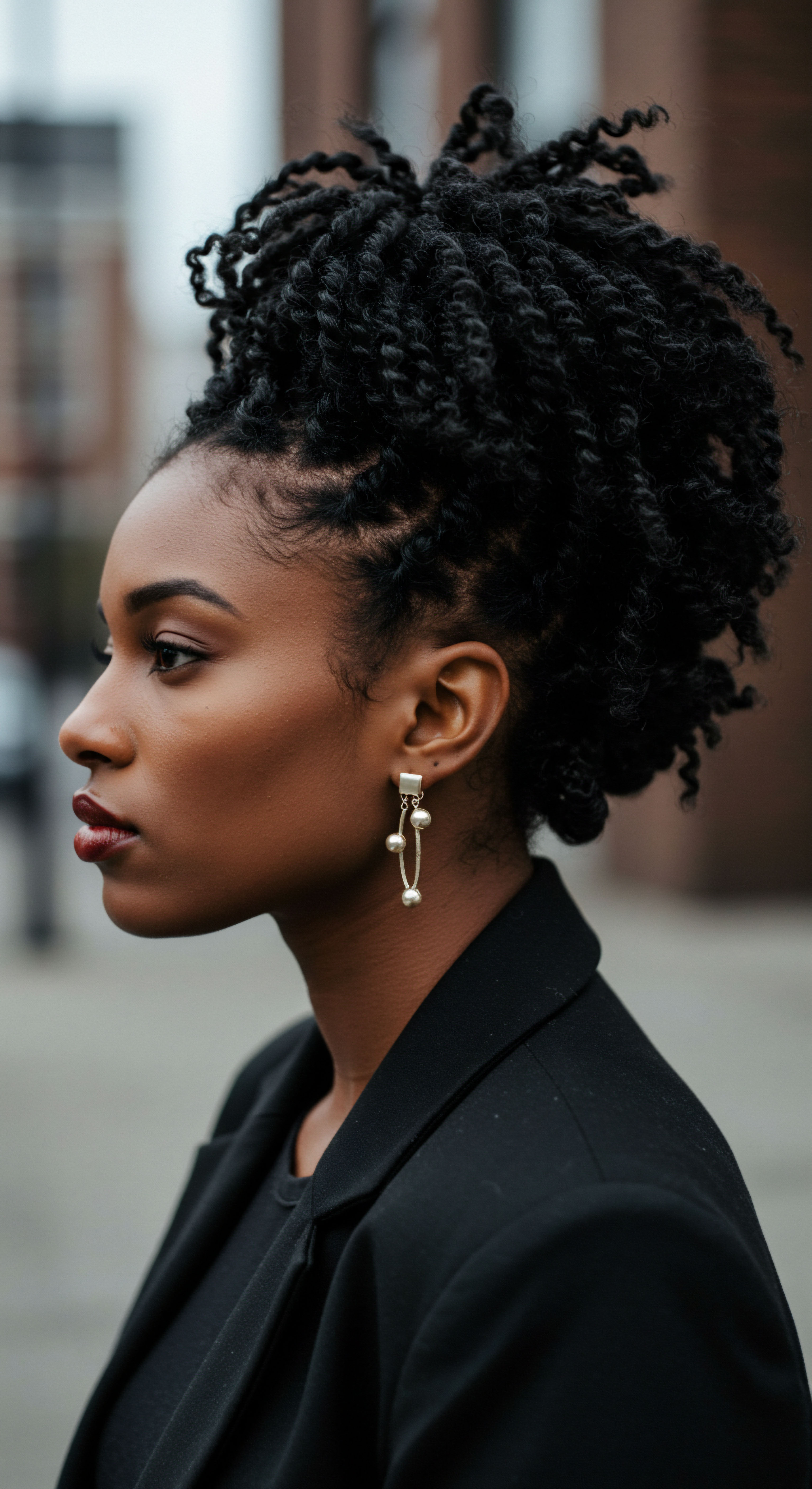
Relay
Moving beyond the practical applications, this section delves into the deeper currents that shaped historical hairline preservation, where science, culture, and social dynamics converged. The methods employed were not isolated techniques but rather responses to biological realities, environmental pressures, and the profound cultural meanings ascribed to hair. Here, we examine the interconnectedness of these elements, drawing upon research and historical data to paint a more complete picture of how ancestral communities sustained hairline vitality.

The Biophysics of Tension and Hairline Integrity
The integrity of the hairline, particularly for textured hair, is profoundly influenced by mechanical tension. Historical communities, through observation, understood that prolonged pulling could compromise the delicate follicles at the scalp’s perimeter. While they lacked the modern understanding of traction alopecia, their practices implicitly aimed to mitigate this risk.
Traction alopecia, a form of hair loss caused by repetitive pulling force on hair follicles, was first described in 1907 in individuals from Greenland who wore tight ponytails. Subsequent research has focused on its prevalence among people of African descent due to certain styling practices. A study conducted by Khumalo et al. in 2008 revealed that traction alopecia was nearly twice as likely to appear in South African women or children who reported experiencing tight, painful braids (odds ratio = 1.94, P = 0.004) or noticed “pimples” at the base of their braids (odds ratio = 1.81, P = 0.046) at the time of styling.
This indicates a clear correlation between the sensation of pain or discomfort during styling and the subsequent development of hairline recession. This data point, while contemporary, illuminates the physiological consequence of practices that historical communities, perhaps intuitively, sought to balance. The traditional methods often involved styles that, while close to the scalp, were meticulously installed to distribute tension evenly or were accompanied by preparations that soothed the scalp.
For example, traditional African braiding techniques often involved careful sectioning and tension control, passed down through generations of skilled practitioners. The intent was to create a durable style without excessive strain on the individual hair strands or the hairline. The use of oils and butters prior to or during styling also served to lubricate the hair, reducing friction and making it more pliable, thereby lessening the pulling force required.

Cultural Mandates and Hairline Care
In many ancient African societies, hair was more than just an adornment; it was a powerful symbol of identity, status, and spiritual connection. The hairline, as the visible boundary of the self, held particular significance. Maintaining a healthy, full hairline was often tied to societal expectations of beauty, fertility, and well-being.
This cultural mandate translated into practices that prioritized hairline health. The time-intensive nature of traditional hair styling, often taking hours or even days, created communal bonding opportunities and allowed for meticulous attention to every strand, including those at the perimeter. This shared experience fostered a collective responsibility for hair care, ensuring that techniques were properly executed and that potential issues, such as tension, were addressed.
For instance, the Yoruba people of Nigeria regarded hair as the most elevated part of the body, and braided hair was used to send messages to deities. Such deep reverence naturally extended to the delicate areas, ensuring practices were gentle and protective. The very act of caring for the hairline became a ritualistic expression of cultural pride and connection.

Environmental Adaptations and Botanical Wisdom
Ancestral communities lived in close harmony with their environments, drawing upon local flora for their hair care needs. This ethnobotanical wisdom played a critical role in preserving hairline health.
Many African plants possess properties beneficial for scalp and hair vitality. Shea Butter (from the shea tree, Vitellaria paradoxa ) and Marula Oil (from the marula tree, Sclerocarya birrea ) are rich in fatty acids and vitamins, providing deep moisture and acting as natural emollients. These were applied to the scalp and hair, creating a protective barrier against harsh sun, wind, and dry air, which could otherwise lead to dryness and brittleness, particularly at the exposed hairline.
Another significant botanical is Rhassoul Clay, sourced from Morocco. This mineral-rich clay was used as a cleansing agent, effectively removing impurities and product buildup from the scalp without stripping its natural oils. A clean, balanced scalp is foundational for healthy hair growth and hairline preservation, as it prevents clogged follicles and inflammation.
Traditional remedies also included infusions and rinses from various herbs. Rooibos tea, originating from South Africa, was valued for its antimicrobial and antioxidant properties, contributing to a healthy scalp environment conducive to hair growth. Neem and fenugreek, prominent in Ayurvedic traditions, were used for their antifungal and antibacterial qualities, addressing scalp conditions like dandruff that could impede hairline health. These plant-based solutions offered a gentle, nourishing approach, contrasting sharply with the harsh chemicals that would later appear in hair care.
| Botanical Agent Shea Butter |
| Geographic Origin West Africa |
| Primary Benefit for Hairline Moisture retention, environmental protection |
| Botanical Agent Marula Oil |
| Geographic Origin Southern Africa |
| Primary Benefit for Hairline Antioxidant protection, conditioning |
| Botanical Agent Rhassoul Clay |
| Geographic Origin Morocco |
| Primary Benefit for Hairline Gentle cleansing, scalp balance |
| Botanical Agent Rooibos Tea |
| Geographic Origin South Africa |
| Primary Benefit for Hairline Antimicrobial scalp health |
| Botanical Agent Neem |
| Geographic Origin India (Ayurveda) |
| Primary Benefit for Hairline Antifungal, antibacterial scalp care |
| Botanical Agent These natural elements provided foundational support for scalp and hairline vitality across various historical contexts. |

What Can Modern Science Learn from Ancient Hairline Practices?
The sophisticated understanding of hair mechanics and botanical properties held by ancient communities offers valuable lessons for contemporary hair science. Modern research continues to validate the efficacy of many traditional ingredients and methods. For instance, studies on plant species used in African hair treatment are increasingly focusing on their nutritional properties and potential to improve local glucose metabolism, suggesting a holistic connection between topical application and cellular health.
The historical emphasis on protective styling, gentle handling, and nutrient-rich topical applications aligns with current dermatological recommendations for textured hair to prevent traction alopecia and promote overall scalp health. The wisdom of avoiding excessive tension, nourishing the scalp, and minimizing manipulation stands as a timeless testament to their intuitive grasp of hair biology.
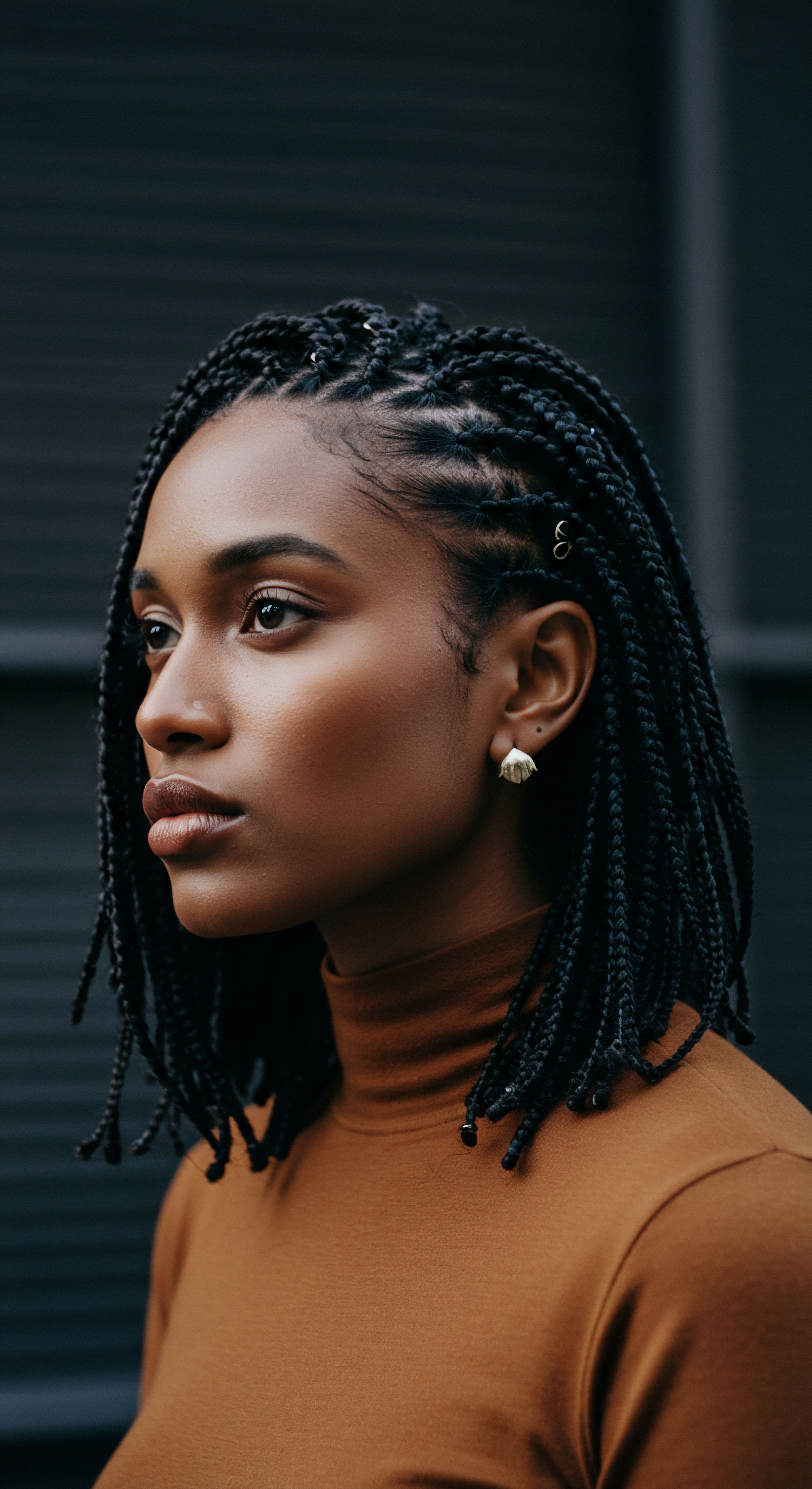
How Did Social Structure Influence Hairline Preservation?
The social structures of historical societies profoundly influenced hair care, including hairline preservation. Hair was often a public statement, reflecting an individual’s place within the community. This visibility meant that hair health, particularly the hairline, was a communal concern and a source of pride.
The communal aspect of hair styling, where women would spend hours braiding and caring for each other’s hair, allowed for the transmission of specialized knowledge and techniques from elder to younger generations. This apprenticeship ensured that proper tension was applied, that the scalp was attended to, and that the delicate hairline was handled with care. The shared responsibility fostered a culture of meticulousness that contributed directly to the preservation of hairlines.
Furthermore, in many cultures, the act of styling hair was intertwined with storytelling, social bonding, and the imparting of wisdom. This meant that hair care was not rushed or superficial but a deliberate, cherished activity that allowed for careful attention to detail, including the vulnerable hairline.
The intricate connection between tension, botanical wisdom, and cultural mandates profoundly shaped historical hairline preservation, offering enduring insights for contemporary care.

Reflection
As we close this exploration into the historical methods of hairline preservation for textured hair, a quiet appreciation settles. The echoes of ancient wisdom remind us that hair care, at its heart, is a deeply personal and cultural undertaking. It is a dance between respecting nature’s gifts, understanding the unique needs of our strands, and honoring the traditions that connect us to generations past.
The delicate curves of a hairline, often overlooked in our hurried modern world, were once meticulously guarded with a blend of reverence, botanical insight, and communal tenderness. May this journey inspire a renewed gentleness in our own daily practices, a deeper listening to the stories our hair carries, and a profound respect for the enduring legacy of those who cared for their strands with such profound intention.
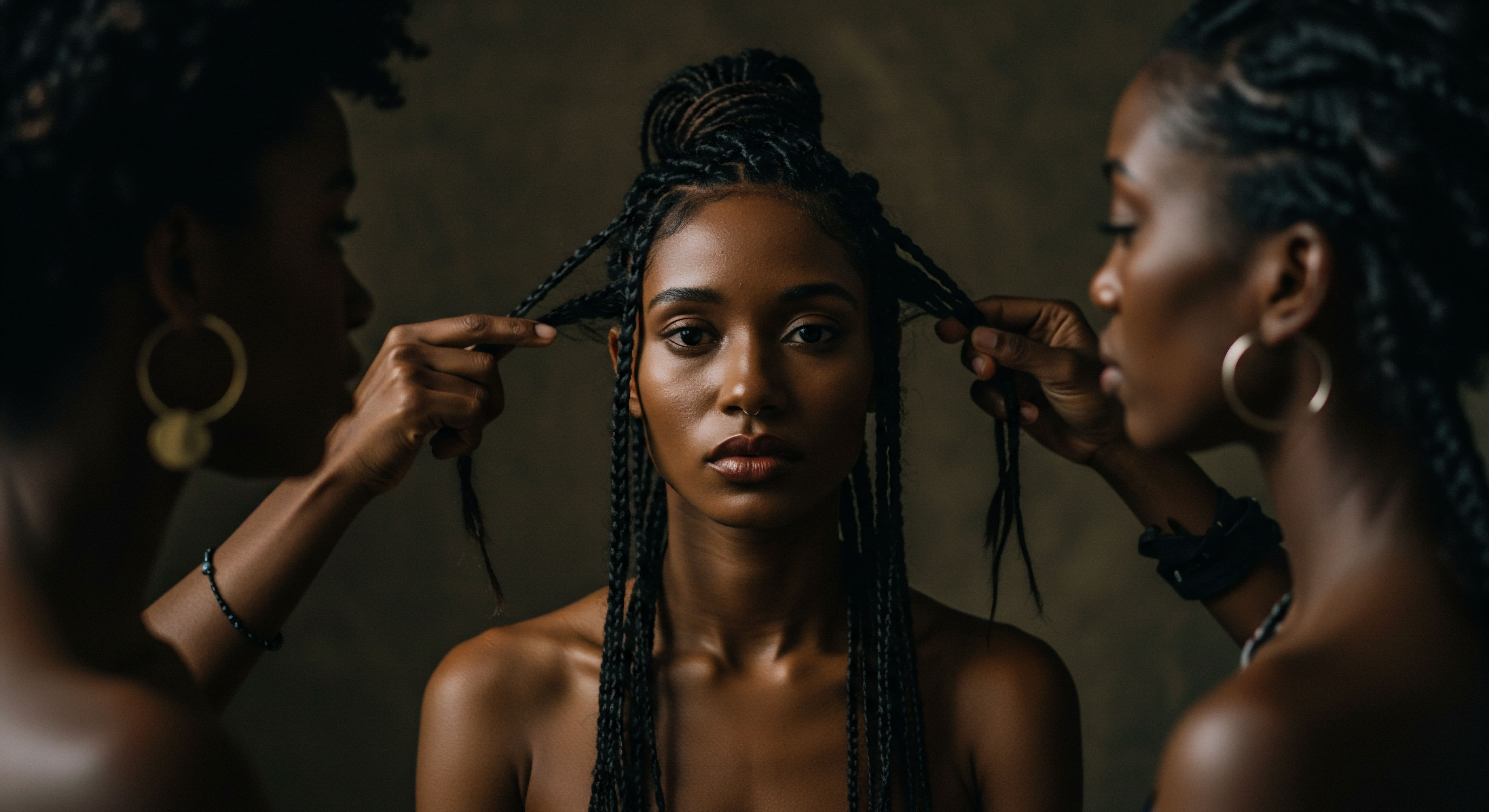
References
- Byrd, A. & Tharps, L. (2001). Hair Story ❉ Untangling the Roots of Black Hair in America. St. Martin’s Press.
- Dabiri, E. (2020). Twisted ❉ The Tangled History of Black Hair Culture. Harper Perennial.
- Khumalo, N. P. et al. (2008). Traction alopecia ❉ the root of the problem. Journal of the American Academy of Dermatology, 58(4), 603-607.
- Mohamed, A. M. (2019). Dansinkran Hairstyle Fashion and Its Socio-Cultural Significance in Akan Traditional Ruling. Journal of Culture, Society and Development, 49, 43-52.
- Robbins, C. R. (2012). Chemical and Physical Behavior of Human Hair. Springer.
- Roseborough, C. & McMicheal, A. (2009). Hair Care Practices in African-American Patients. Seminars in Cutaneous Medicine and Surgery, 28(2), 103-108.
- Spencer, G. A. (1941). Bilateral Temporal Alopecia in the Negro Woman. Archives of Dermatology and Syphilology, 44(2), 263-264.
- Tharps, L. (2001). Hair Story ❉ Untangling the Roots of Black Hair in America. St. Martin’s Press.
- Yao, X. et al. (2024). Cosmetopoeia of African Plants in Hair Treatment and Care ❉ Topical Nutrition and the Antidiabetic Connection? Diversity, 16(2), 96.